Kenfig Nature Reserve in South Wales is one of my favourite places to watch dragonflies and is one of Wale’s top sand-dune reserves attracting special plants, birds and insects that depend on this type of coastal habitat for their survival. Situated on the edge of the reserve is Kenfig Pool, a magnet for a wide range of dragonflies. The rest of the reserve consists of a large expanse of sand dunes, which lead to the coast and Skier Point, with lovely views across the Swansea Bay to the Gower. In stark contrast, to the western horizon is Port Talbot’s industrial area and steelworks. The striking contrast serves to highlight the wild beauty of the reserve itself.

The sand-dune reserves attract special plants, birds and insects
that depend on this type of coastal habitat for their survival.
On warm early autumn days there are quiet, sheltered spots amongst the rushes that are well sheltered from the coastal winds. Such places form a perfect sun-trap for the Migrant Hawkers that can be seen flying low over water in considerable numbers, hovering frequently and investigating marginal vegetation in search of females. Some are brave enough to hover motionless within a few feet of my head, only to dart away within seconds as if bored with my presence. Mating is prolonged and a couple tolerated having my macro lens peering over them for some considerable time. Later, I could see the females ovipositing alone as they lay their eggs into aquatic vegetation, sometimes well above the waterline. Both sexes can be seen frequently hanging along hedgerows well away from the water and flying until dusk.
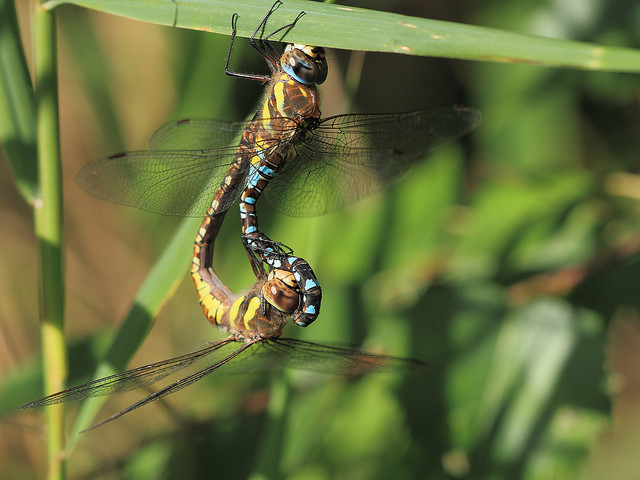
A female will be chased vigorously and, if possible, the insects will pair in flight before settling on a tree or among shoreline vegetation to copulate for a lengthy period of time.
The name is a clue to its habits and this striking dragonfly use to be a scarce visitor from southern Europe. However, just as migrant butterflies such as the Red Admiral or Painted Lady have surged northwards in the past few decades, possibly due to global warming, so has the Migrant Hawker. Indeed, it was once known as the Scarce Hawker, reflecting its rarity for much of the twentieth century.

Sunbathing most often occurs in the morning or after foraging. They prefer a site low down, sheltered and facing the sun, with a clear escape flight path. When perched, the body hangs vertically, oriented to catch the most sunshine.
The distribution map on my ‘Britain’s Dragonflies’ field guide shows just how much progress this insect has made. Today it is widespread across much of lowland England and Wales, and is now surging upwards into Scottish Borders. Personally, I think this is one of our most attractive dragonflies. Smaller than the mighty emperor and southern hawkers, the males are brown alternating to sky blue, while the females are brown and yellow. The immature female is the most striking, with delicate mauve markings on the abdomen, subtle and beautiful, especially as they perch on the bramble bushes next to the ripened blackberries, glistening in the September sunshine.
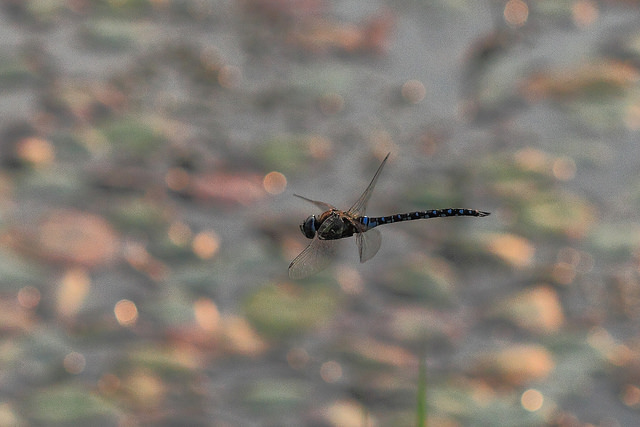

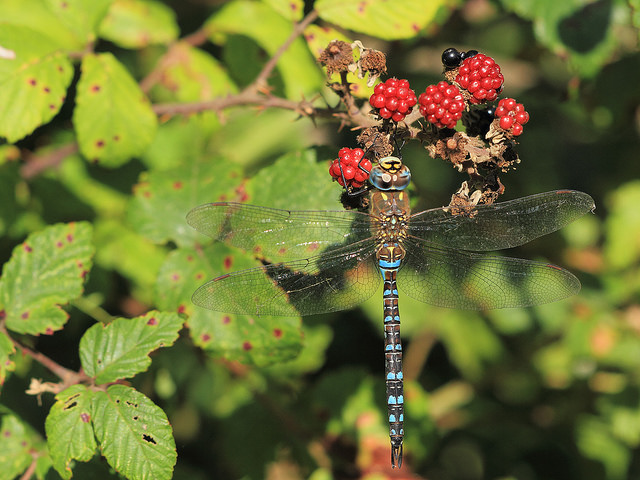
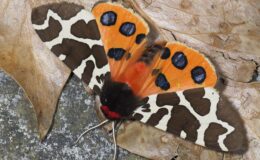
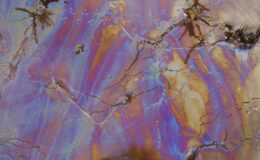
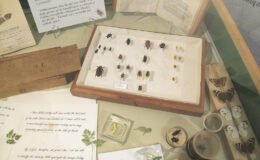
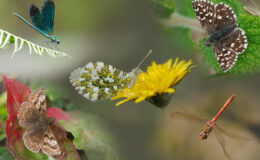
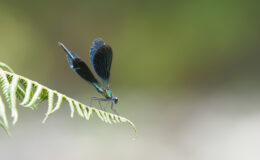
Leave a Comment